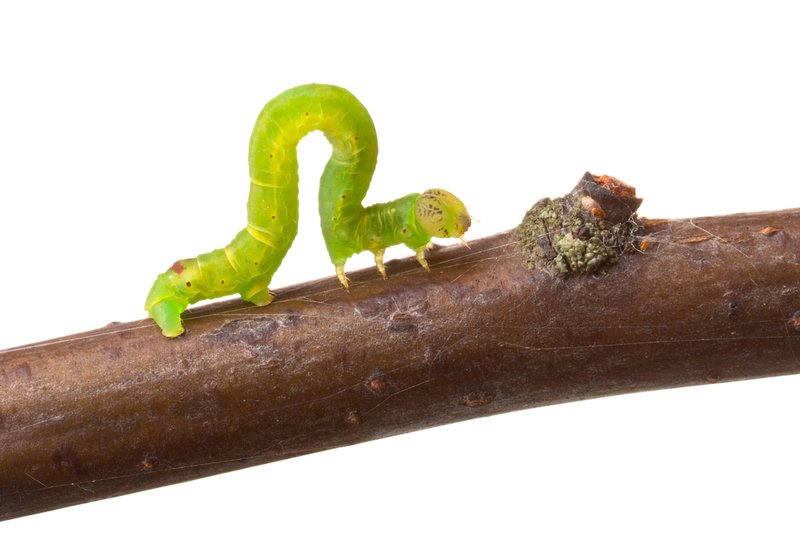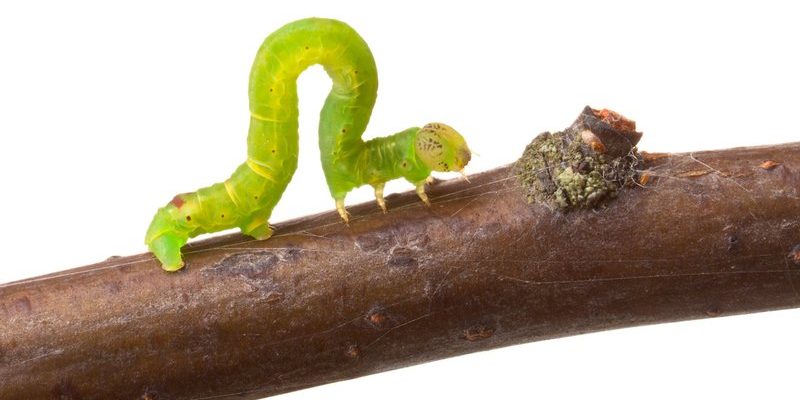
Inchworms, or loopers, are the larvae of moths and are found in many woodland areas. They might be small, but their impact on decomposition and nutrient cycling is huge. In this article, I’ll take you through the various ways these little creatures contribute to woodland decomposition. By the end, you’ll see these tiny worms in a whole new light, appreciating their role in keeping our forests healthy and vibrant.
What Are Inchworms?
Inchworms are the caterpillar stage of certain moths, most commonly from the Geometridae family. You might notice their unique movement—rather than crawling like a typical caterpillar, they have this amusing ability to “inch” along with a looping motion. This is where they get their name. These larvae can be found munching on leaves in trees and shrubs, making them one of nature’s little munchers.
They come in various colors and sizes, often resembling twigs or leaves, which helps them blend into their surroundings. This camouflage not only protects them from predators but also makes them effective herbivores. Their diet consists mainly of tree leaves, which is crucial since it allows them to thrive in wooded areas, assisting in the natural balance of nature.
How Inchworms Contribute to Decomposition
When you think of decomposition, you might picture larger creatures like fungi or earthworms doing all the hard work. However, inchworms play an equally significant role, especially in the early stages of the decomposing process. As they feed on leaves, they break down plant material into smaller pieces, making it easier for other decomposers to get to work.
By munching on fresh leaves, inchworms help recycle nutrients back into the soil. Think of them as the first link in the chain of decomposition. Their feeding habits create a rich layer of organic material that nourishes the soil, helping to kickstart the decomposition process.
The Nutrient Cycle and Inchworms
You might be wondering how inchworms fit into the broader **nutrient cycle** of the forest. This cycle is all about the movement of nutrients through different components of the ecosystem. When inchworms consume leaves, they break down these plants into smaller pieces that decay more quickly. This process enriches the soil with essential nutrients like nitrogen, phosphorus, and potassium.
Once decomposed, these nutrients become available for other plants, allowing for new growth. It’s kind of like a cycle of giving and receiving. Inchworms help create healthy soil, which in turn supports the growth of more plants, creating a thriving forest ecosystem.
The Relationship Between Inchworms and Forest Health
A healthy forest is a balanced forest, and inchworms contribute to that balance. Their presence indicates a rich environment where plants can thrive—a sign of biodiversity. However, an overabundance of these creatures can also signal a problem. For instance, if they consume too much foliage, it can lead to stressed plants, which may struggle to survive.
Understanding the role of inchworms helps us see the bigger picture. These tiny creatures maintain the health of our woodlands, but they must exist in balance with other species. Too few or too many can disrupt the natural ecosystem, highlighting the importance of monitoring their populations.
Inchworms in the Food Chain
Inchworms aren’t just essential for decomposing materials; they are also a food source for various forest creatures. Birds, small mammals, and even other insects rely on inchworms for sustenance. By being part of the food chain, inchworms help support a diverse range of wildlife, creating a web of interconnected species.
This web is what makes woodland ecosystems so fascinating and resilient. Removing one component, like inchworms, could have ripple effects throughout the ecosystem, affecting everything from plant life to larger predators in the area.
How to Promote a Healthy Inchworm Population
You might be curious about how you can help inchworms thrive in your own backyard or nearby woods. Here are a few simple steps to consider:
- Plant a Variety of Trees: Inchworms thrive on different tree species. Maintaining a diverse mix promotes their population.
- Avoid Pesticides: Chemical treatments can harm inchworms and other beneficial organisms in the soil.
- Support Native Flora: Planting native plants and trees can create a more inviting habitat for inchworms, supporting their lifecycle.
By nurturing inchworms, you’re not just helping these tiny creatures; you’re also supporting the entire woodland ecosystem. Every little effort counts!
The Future of Inchworms in Ecosystem Research
As scientists continue to study ecosystems, inchworms are becoming subjects of interest. Understanding their role may lead to better conservation efforts and forest management practices. If we can learn how to keep their populations in balance, it could enhance forest health.
Research on inchworms also helps us grasp the importance of herbivores in ecosystems. Scientists can explore how these creatures interact with other organisms, giving us deeper insights into biodiversity. This research can help shape policies that protect our forests and promote sustainable practices.
In conclusion, inchworms might be small, but their role in woodland decomposition is enormous. They break down leaves, feed numerous species, and contribute to the nutrient cycle, all while supporting healthy ecosystems. By understanding and valuing these little creatures, we can help ensure that our woodlands remain vibrant for generations to come.

